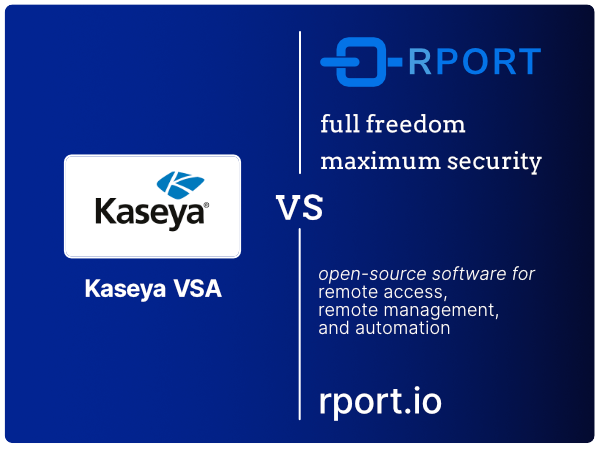
- #REMOTELY INSTALL KASEYA AGENT COMMAND LINE HOW TO#
- #REMOTELY INSTALL KASEYA AGENT COMMAND LINE INSTALL#
- #REMOTELY INSTALL KASEYA AGENT COMMAND LINE MANUAL#
#REMOTELY INSTALL KASEYA AGENT COMMAND LINE MANUAL#
Let’s go through each of the options listed here :-ġ) Reject new manual agent installations – All manually installed agents are rejected by Operations Manager. We see that manual agent installations are rejected by Management server, this is the most secure setting and is selected by default. On the Management Server properties window, click on Security tab and note the default settings. Launch the Operations Manager console, click on Administration workspace, expand Administration, expand Device Management, and then right click Management Servers click on Properties. If you have a single Management Server then proceed with the below steps to allow management server to accept the manual installation of agents. With this setting enabled, manual installation of SCOM 2012 SP1 agents are accepted by management server. By default manual agent installations are rejected, click on Review new manual agent installations in pending management view and select Auto-approve new manually installed agents. To do so click on Administration, in the Administration workspace, expand Administration, expand Settings, expand Type: Server, right-click Security, and then click on Properties. If you have more than one Management Servers in your organization then you can configure manual agent installation settings for a management group through global configuration.
#REMOTELY INSTALL KASEYA AGENT COMMAND LINE INSTALL#
So our first step to install SCOM agent using command line would be to allow the management server to accept the manual installation of SCOM agents.

If you are using discovery wizard to install the agent on domain controller then the Active Directory Management Pack helper object is automatically installed.

The OomADs.msi file can be found on the management server and the path is C:Program FilesSystem Center 2012Operations ManagerServerHelperObjects. If you are planning to install the SCOM agent on domain controller manually then install the SCOM agent on domain controller and then you must install the Active Directory management pack helper object by running the file OomADs.msi on domain controller, this will prevent errors that might occur during deployment of the management pack. So its recommended that you first configure management server to accept manual installation of clients and then install the clients manually.Ĭan I Install SCOM agent on my domain controller ? – Yes, you can install the SCOM agent on your domain controller, I would recommend you to install the SCOM agent through discovery wizard.

If the SCOM agent is installed manually then you must configure the management server to accept manually installed agents, the agents will display in the console after approximately one hour. So we must configure our management group or single management server to accept agents installed with MOMAgent.msi. In this post we will be using scomadmin as the user account to install the SCOM agent using command line and this account is a member of domain admins group.Ģ) By default the management server does not accept the manual installation of SCOM agent, if you install the agent manually it will not be displayed in the operations manager console. Before you install SCOM agent using command line, here are few things that needs to be considered.ġ) The account that is used to run MOMAgent.msi must have administrative privileges on the computers on which you are installing agents. In this post we will see the steps to install SCOM agent using command line, to install SCOM agent using command line we will make use of MOMAgent.msi and this is also referred to as manual installation of SCOM agent.
#REMOTELY INSTALL KASEYA AGENT COMMAND LINE HOW TO#
Install SCOM Agent Using Command Line – After installing SCOM 2012 SP1, we saw how to install the SCOM agent on windows based computers.


 0 kommentar(er)
0 kommentar(er)
